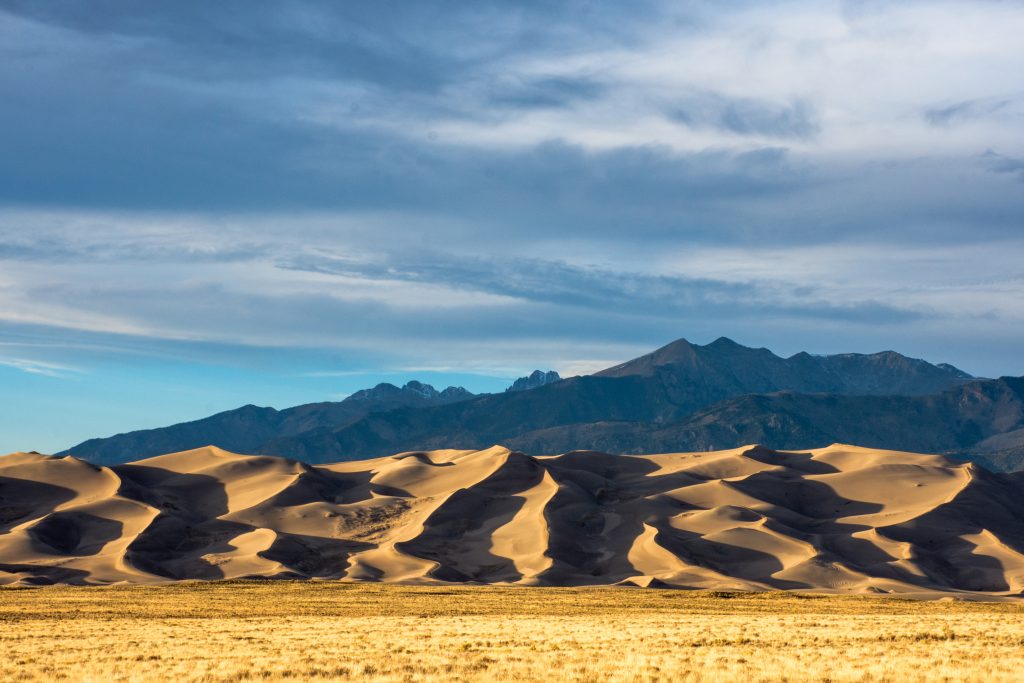GREAT SAND DUNES NATIONAL PARK – The sun glints off of a long line of cars sitting outside the entrance of Great Sand Dunes National Park.
It got so congested that park officials even went as far as to place an outhouse along the road for guests as they waited to enter. The park simply can’t handle the volume of visitors that come to view the gem of the San Luis Valley, so people must wait.
It’s no surprise that so many people flock to this remote corner of Southern Colorado. With the jagged snow encrusted Crestone Peaks framing the Great Sand Dunes, it’s truly a natural wonder.

Looking across the valley towards the dunes. PHOTO Nick Penzel
One of the biggest threats to Great Sand Dunes National Park are the crowds of people this beauty attracts.
“Our infrastructure is taxed,” Fred Bunch, the chief of resource management at the park, said to a Colorado College tour on Monday. According to Bunch, the 486,000 visitors to the park in 2017
mark a 100% increase in visitation since 2013.
Although the dunes are resilient to human impact, management at the park is worried about visit quality. More people also means increased impacts on the more fragile desert and mountains that surround the park.
This isn’t the first time the Great Sand Dunes have been threatened.
Gold mining operations in the early 1900s threatened to restrict access. Only in 1938, when a women’s club from Alamosa took up the task of protecting the dunes, was the area designated a national monument and access secured.
In the preceding years, officials bought much of the land surrounding the park.
When the threat of pumping aquifers in the San Luis Valley, as well as additional development threats, brought new attention to the area, the land managers already had a network in place for establishing Great Sand Dunes National Park and Preserve. Additional designations as wilderness and a wildlife preserve on parts of the park further increased the level of protection for the land.
“There’s this huge pile of sand out there, we can get gold out of that, or we can leave it alone and let people enjoy it and let that opportunity exist for generations and generations,” Bunch says.
For the rangers who work at the park, the primary purpose is to conserve the landscape so it will exist exactly as it is for future generations. While the increase in visitors complicates conservation, the economic benefits associated with tourism necessitate a balanced approach.
The San Luis Valley is one of the poorest regions in Colorado. The Great Sand Dunes bring $29 million to the economy and create 408 jobs directly related to the park, Bunch said, citing park service models.
For a region with an uncertain economic future as drought and climate change threaten agriculture, the park could be a lifesaving resource.
Overcrowding, in conjunction with problems like climate change, will only intensify in the coming years. Bunch hopes to increase parking as well as other infrastructure so that the park can cope with the massive population growth predicted by the state government.
The problems facing the park don’t stop Bunch from loving his job though.
“My teeth are ground down from smiling,” he says, “we are blacksmiths in love with our anvils.”

